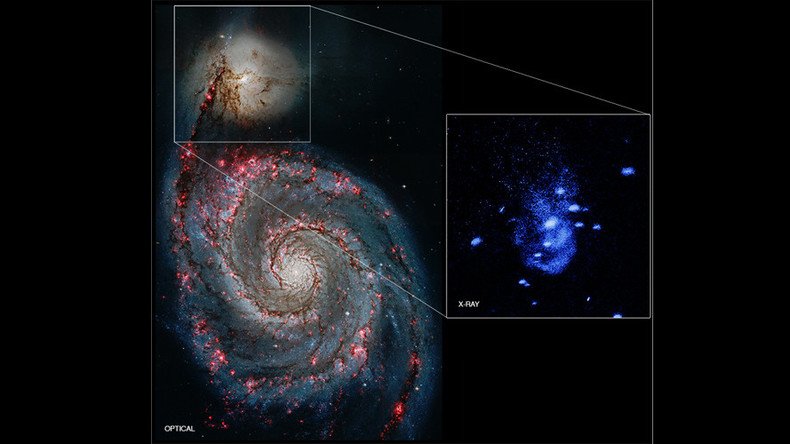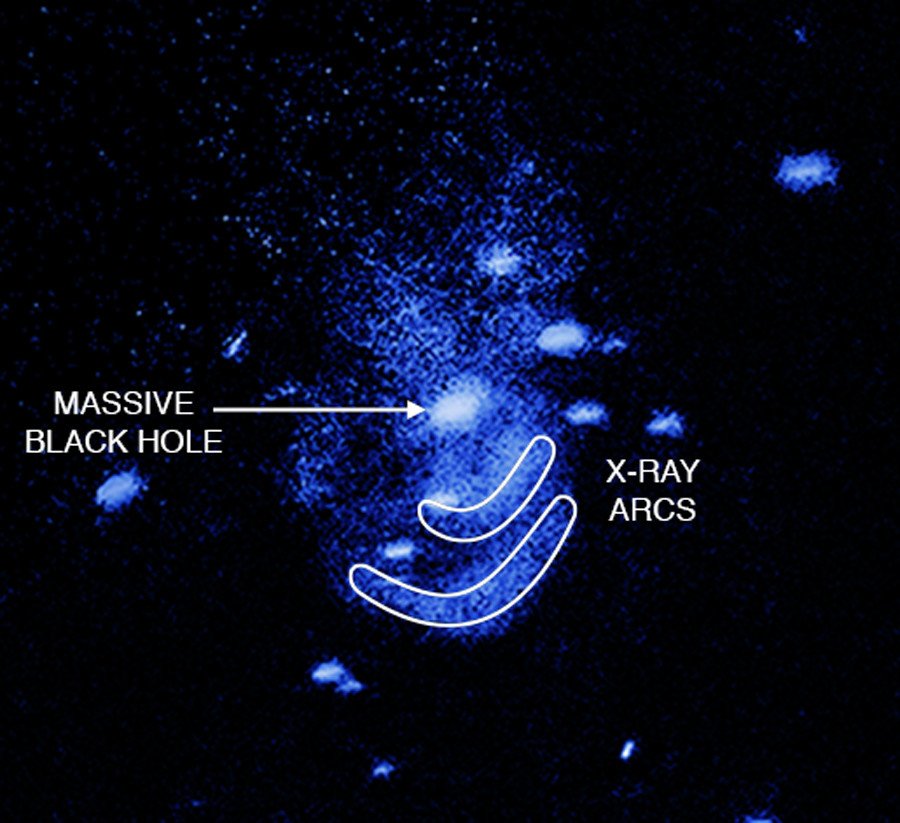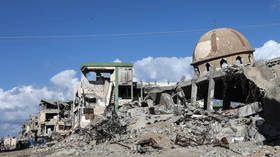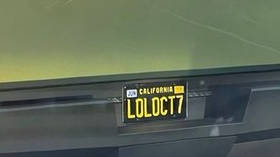NASA finds supermassive black hole that ‘burps’ gas

A supermassive black hole in a nearby galaxy has been spotted “burping” gas and star-forming dust, NASA says. Scientists now think black holes could be “star factories” – not just star-eaters.
In making this new discovery, NASA looked into the Chandra X-ray Observatory’s new data from a nearby galaxy NGC 5195, which is now merging with its companion galaxy NGC 5194, also known as “The Whirlpool.”
In the heart of NGC 5195, there is a black hole which, NASA says, produced two enormous blasts. Chandra’s pictures now have evidence of those “violent outbursts.”
Fit to burst: Black holes can’t gobble up more than 50bn suns, scientist says https://t.co/EiBdgYqyXlpic.twitter.com/8ejBuipb2k
— RT America (@RT_America) December 11, 2015“This is one of the nearest supermassive black holes to Earth that is currently undergoing such violent outbursts,” NASA said in a press release.
It could be that the outbursts of the black hole in NGC 5195 were triggered by its interaction with its larger companion, making gas funnel in towards the black hole.
While it is not so rare that black holes spew gas, it is quite uncommon to witness it so closely, scientists say. This time, their eyes caught arcs of X-ray emissions near the center of the dwarf galaxy, the leftovers of two huge blasts.

“We think these arcs represent fossils from two enormous blasts when the black hole expelled material outward into the galaxy,” said co-author Christine Jones of the Harvard-Smithsonian Center for Astrophysics (CfA) in Cambridge, Massachusetts. “This activity is likely to have had a big effect on the galactic landscape.”
The team compares those remnants to a burp after a big meal.
“For an analogy, astronomers often refer to black holes as 'eating' stars and gas. Apparently, black holes can also burp after their meal,” said Eric Schlegel of The University of Texas in San Antonio, who led the study.
As the scientists explain, the phenomenon could be a result of what they call “a feedback,” when supermassive black hole affects its host galaxy. They detected a slender region of emission of relatively cool hydrogen gas just outside the outer X-ray arc. This could mean that the hotter, X-ray emitting gas has “snow-plowed” the hydrogen gas from the center of the galaxy.
Rare & dying: Giant radio galaxy found 9mn light yrs away from Earth https://t.co/fUgsUQcbenpic.twitter.com/HE1m3jElhP
— RT America (@RT_America) November 9, 2015In NGC 5195, the outer arc has probably plowed up enough material to trigger the formation of new stars, the team says.
“We think that feedback keeps galaxies from becoming too large,” said co-author Marie Machacek of CfA. “But at the same time, it can be responsible for how some stars form. This shows that black holes can create, not just destroy.”
The team estimates that it took about one to three million years for the inner arc to reach its current position, and three to six million years for the outer arc.












